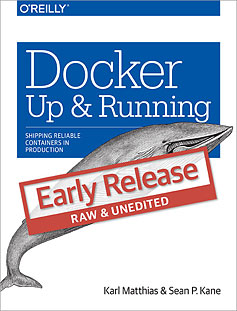"End-to-End Optimization" entries

Building APIs with Swagger
Designing and coding APIs in Node.js.

Getting an API design right demands far more than just figuring out which calls should do what. Public APIs — APIs meant to be used by people other than their creators — present a special set of challenges that can inform all API design. Even private APIs often find themselves with unexpected users, and can last far longer than was planned. Apigee faced the special challenge of creating a marquee API, an API for managing its APIs.
What comes first? The API or the code? Who is the API really for, and how important is the long-term maintenance of the API? Where does documentation fit? Answer these questions, and you can find the right approach.

Battery performance in Android M
Exploring the new Android M battery performance features.

It has been a long held personal belief that most battery drain issues on smartphone devices are due to applications that are improperly tuned. I work very closely with mobile developers to help optimize mobile apps for speed and battery life with AT&T’s own Application Resource Optimizer. I am also in the process of finishing up a book on High Performance Android Apps that will be published later this summer. So I am always excited to see mobile application performance hit the center stage.
Last month, Google held its annual Google I/O conference, where they announce new products, tools and features. This year, with the release of the Android M developer preview, performance of mobile devices/battery life and app performance were on the center stage (and unveiled at the keynote!). Lets look at the new features and tools available to users and developers to make Android’s battery life better.
Read more…

The language and metrics of UX evolve at Velocity 2015
As developers and designers converge, we're seeing an increased focus on the user's perspective.
Editor’s note: The O’Reilly Velocity Conference in Santa Clara was held last week. The event explored the essential trends driving web operations and performance forward. In the post that follows, Mark Zeman digs into recent changes he’s observed in one aspect of Velocity: the role, language, and metrics surrounding user experience.
I’ve attended four O’Reilly Velocity conferences over the last year, and I was struck by a notable shift in the conversations at Velocity in Santa Clara, Calif. Many speakers and attendees have started to change their language and describe the experience of their websites and apps from the user’s perspective.
The balance has shifted from just talking about how fast or reliable a particular system is to the overall experience a user has when they interact with and experience a product. Many people are now looking at themselves from the outside in and developing more empathy for their users. The words “user” and “user experience” were mentioned again and again by speakers.
Here are recent talks from Velocity and other events that highlight this shift to UX concerns. Read more…

Signals from the 2015 O’Reilly Velocity Conference in Santa Clara
Key insights from DevOps, Web operations, and performance.
People from across the Web operations and performance worlds are coming together this week for the 2015 O’Reilly Velocity Conference in Santa Clara. Below, we’ve assembled notable keynotes, interviews, and insights from the event.
Think like a villain
Laura Bell outlines a three-step approach to securing organizations — by putting yourself in the bad guy’s shoes (without committing actual crime, she stresses):
- Think like a villain and be objective: identify why and how someone would attack your company; what is the core value they’d come to steal?
- Create a safe place to create a little chaos: don’t do it live, but find a safe place without restriction and without fear to break things, to practice creative chaos.
- Play like you’ve never read the the rule book: Not everyone plays by the same rules as you, so to protect yourself and your company, you have to think more like the person willing to break the rules.

Applied DevOps and the potential of Docker
The cultural impact within a software engineering organization can be dramatic.
Editor’s note: this post is from Karl Matthias and Sean P. Kane, authors of “Docker Up & Running,” a guide to quickly learn how to use Docker to create packaged images for easy management, testing, and deployment of software.
At the Python Developers Conference in Santa Clara, California, on March 15th, 2013, with no pre-announcement and little fanfare, Solomon Hykes, the founder and CEO of dotCloud, gave a 5-minute lightning talk where he first introduced the world to a brand new tool for Linux called Docker. It was a response to the hardships of shipping software at scale in a fast-paced world, and takes an approach that makes it easy to map organizational processes to the principles of DevOps.
The capabilities of the typical software engineering company have often not kept pace with the quickly evolving expectations of the average technology user. Users today expect fast, reliable systems with continuous improvements, ease of use, and broad integrations. Many in the industry see the principles of DevOps as a giant leap toward building organizations that meet the challenges of delivering high quality software in today’s market. Docker is aimed at these challenges.

Ghosts in the machines
The secret to successful infrastructure automation is people.

“The trouble with automation is that it often gives us what we don’t need at the cost of what we do.” —Nicholas Carr, The Glass Cage: Automation and Us
Virtualization and cloud hosting platforms have pervasively decoupled infrastructure from its underlying hardware over the past decade. This has led to a massive shift towards what many are calling dynamic infrastructure, wherein infrastructure and the tools and services used to manage it are treated as code, allowing operations teams to adopt software approaches that have dramatically changed how they operate. But with automation comes a great deal of fear, uncertainty and doubt.
Common (mis)perceptions of automation tend to pop up at the extreme ends: It will either liberate your people to never have to worry about mundane tasks and details, running intelligently in the background, or it will make SysAdmins irrelevant and eventually replace all IT jobs (and beyond). Of course, the truth is very much somewhere in between, and relies on a fundamental rethinking of the relationship between humans and automation.
Read more…

Chaos Monkey for systems of people: The ultimate performance hack
The O'Reilly Radar Podcast: Alois Reitbauer on performance hacking, DevOps applications, and fostering a culture of respect.
Subscribe to the O’Reilly Radar Podcast to track the technologies and people that will shape our world in the years to come.
In this week’s episode of the Radar Podcast, O’Reilly’s Courtney Nash chats with Alois Reitbauer, chief evangelist at Ruxit, about how DevOps is deeply woven into the Ruxit culture. Reitbauer also talks about how the term “performance hacking” came about at Ruxit, why Chaos Monkey should be applied to systems of people, and why trust across — and between — all departments in an organization is essential.
DevOps beyond DevOps
Performance hacking is a term that emerged at Ruxit about a year ago as the company prepared for the beta launch, Reitbauer said, when they realized as the company scaled up, they needed to bring everyone from all their teams together. “The idea of performance hacking, then,” he noted, “was really, how can we scale up this collaboration between the DevOps teams, the product development teams, and our go-to-market growth hacking teams while we grow as an organization.” The ultimate aim was to figure out how to continue to act like a three-person, one-room startup as the company scaled to a couple hundred people.
One of the approaches embraced at Ruxit is to apply some of the DevOps best practices to their growth hacking and product development strategies. As an example, Reitbauer offered up the idea of Chaos Monkey, as applied not to AWS instances, but to the organization as a whole. The way it works, he explained, is to send a member of a team — any team — away on short notice (or no notice) and see what breaks. Reitbauer said that they’d actually done this and outlined what they learned from the exercise:
We have done it, and it also came up as part of our regular organizational practices. Like, when we had our first very strong conference season — we sent people to different shows all over the place; we picked people from the team who had to go somewhere. And even if people knew they were going to be out of the office in a couple of weeks, they still started to behave as if they would be around all the time, that they wouldn’t be leaving the office. Then, suddenly they were on a plane. They had no time to do their everyday work, and suddenly they realized where they really needed help. So, you don’t even have to make it a total surprise. You just have to plan how to get people out of their regular working behavior to do something else. Then we were able to figure out, ‘We really need somebody else to be able to jump in here or to help somebody out over there.’ It might be a regular holiday or just not daily routine.

What should replace the project paradigm?
Creating alignment at scale within enterprises.

The problems caused by using the project paradigm to delivering software systems are severe. The effect of projects on downstream teams such as release and operations were, for my money, most succinctly articulated in Evan Bottcher’s article “PROJECTS ARE EVIL AND MUST BE DESTROYED“. The end result — complex, heterogeneous production environments that are hard to change or even keep running — is due to the forces Charles Betz identifies in Architecture and Patterns for IT Service Management, Resource Planning, and Governance: Making Shoes for the Cobbler’s Children:
Because it is the best-understood area of IT activity, the project phase is often optimized at the expense of the other process areas, and therefore at the expense of the entire value chain. The challenge of IT project management is that broader value-chain objectives are often deemed “not in scope” for a particular project, and projects are not held accountable for their contributions to overall system entropy.
Furthermore, bundling work up into projects combines low-value features with high-value features in order to deliver the maximum viable product that is the inevitable result of the large-batch death spiral. This occurs when product owners try and stuff as many features as possible into the next release so they don’t have to wait for the one after in order to get them delivered. As a result, the median cycle time for delivering features is often poorly correlated with their priority — a highly undesirable outcome.
Why do we stick with it? Because our budgeting processes are designed to operate on projects, and project managers and the PMO know how to deliver them.
Since these are clearly poor reasons, what should we do instead?

7 user research myths and mistakes
Finding the holes in qualitative and quantitative testing.

Attend our live training event, “UX Design for Growth — Improving User Conversion,” on September 15, 2015, starting at 10 a.m. PT. Author Laura Klein will teach you to design for product growth.
I can’t tell you how often I hear things from engineers like, “Oh, we don’t have to do user testing. We’ve got metrics.” Of course, you can almost forgive them when the designers are busy saying things like, “Why would we A/B test this new design? We know it’s better!”
In the debate over whether to use qualitative or quantitative research methods, there is plenty of wrong to go around. So, let’s look at some of the myths surrounding qualitative and quantitative research, and the most common mistakes people make when trying to use them.
Read more…

Business at web speed
A "Coded Business" harnesses feedback loops, optimization, ubiquitous delivery, and other web-centric methods.

Seven years ago, Steve Souders and Jesse Robbins came to the realization that they both worked within “tribes” that, while ostensibly quite different, were talking about many of the same things. Front-end developers and engineers were figuring out how to make web pages faster and more reliable, and web operations folks were making deployments faster and more resilient.
And so goes the tale of how Velocity came to be — a conference that brought those tribes together and openly shared how to make the web faster and stronger. In those seven years, quite a lot has changed, and many ideas, terms, and technologies have come into being — some directly as a result of Velocity, others were already in the works. DevOps, Chef, Puppet, Continuous Delivery, HTTP Archive — these were the earlier forays. Soon to follow were AWS, Application Performance Monitoring (APM) products, many more monitoring tools, many more CDN vendors, WebPageTest, the explosion of the cloud, Chaos Monkey, mobile everything, Vagrant, Docker, and much, much more.
Out of the fire of Velocity came a New Way of doing things forged in a web-centric world. Along the way, something changed fundamentally about not just tech companies, but companies in general. As we looked around more recently, we realized it wasn’t just about the web and fast pages any more. Read more…

